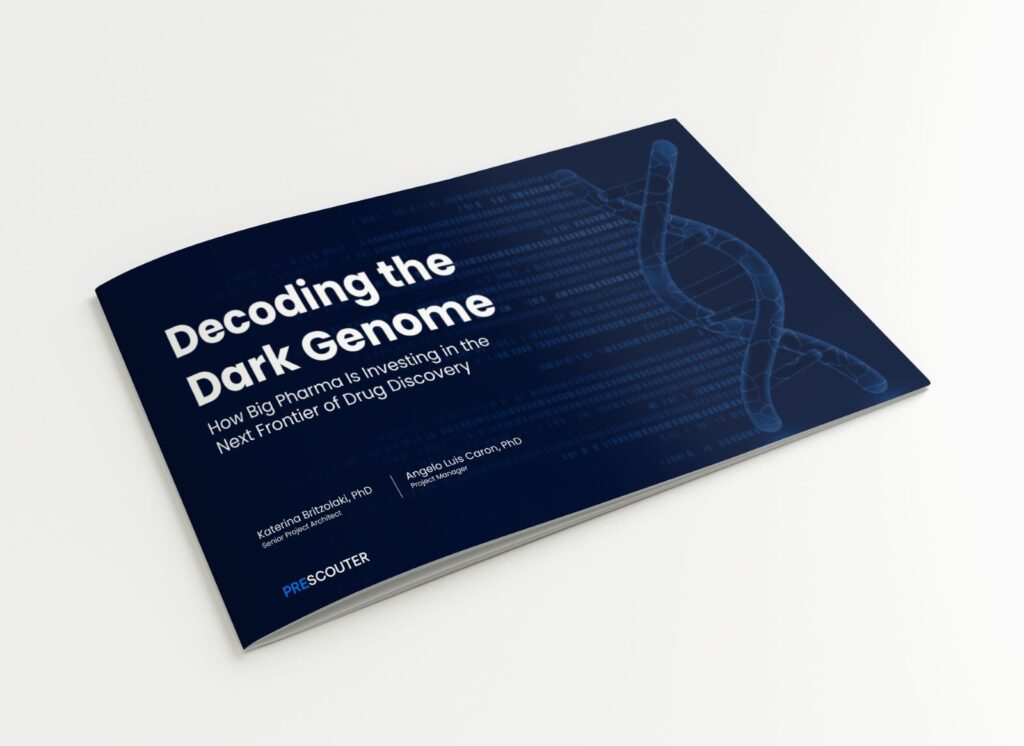The dark genome, encompassing 98% of human DNA, has long been overlooked. Once considered “junk,” scientists now believe it plays a crucial role in regulating genes related to health and disease. This has prompted leading pharma companies to invest significantly in dark genome-related projects.
What is dark genome and why is it important?
The dark genome refers to the large portion of DNA that does not code for proteins, making up about 98% of our genome. This non-coding DNA is important in regulating gene activity and influences how genes are expressed.
Non-coding regions within the dark genome are linked to genetic variations associated with diseases like cancer, cardiovascular disorders, and neurodegenerative conditions. By exploring the dark genome, scientists hope to address the limitations of current therapies, particularly for diseases unresponsive to traditional treatments.
Pharma giants invest over $2 billion:
Major pharmaceutical companies are heavily investing in dark genome research to develop effective treatments for various diseases, surpassing $2 billion in total funding. Eli Lilly committed up to $1 billion to HAYA Therapeutics for RNA-targeted therapies. Meanwhile, Bayer entered a $547 million agreement with NextRNA, focusing on non-coding RNA targets. 
Figure 1. Big Pharma invests billions of dollars in dark genome related projects
Startups are pivotal in advancing dark genome breakthroughs by exploring non-coding regions for new drug possibilities. Many of these startups have secured substantial funding, reflecting growing confidence in the potential of non-coding RNA targets. Their research supports Big Pharma’s objectives, with some companies planning trials aimed at diseases like lupus and fibrotic conditions.
Market potential for dark genome therapeutics:
The dark genome market could reach nearly $300 billion by 2033, driven by unmet patient needs and expanded research. Approximately one in three patients does not respond to existing therapies, emphasizing the need for innovative approaches. Investments are aligning with this market potential, particularly in areas like metabolic and neurodegenerative diseases.
Companies utilizing dark genome insights can tap into a significant market by addressing the needs of millions affected by diseases such as cancer and diabetes. Research reveals that a substantial portion of disease-related genetic variants resides in non-coding DNA. By exploring these non-coding regions, organizations can identify potential new drug targets for these diseases.
The dark genome’s implications extend beyond common diseases to areas like neurodegenerative and cardiovascular disorders. As companies decode more non-coding DNA, they gain the ability to pinpoint biomarkers linked to these conditions. Such breakthroughs can lead to precise therapies targeting unique genetic traits, potentially improving patient outcomes.
How can PreScouter help?
Here is how PreScouter can help companies navigate the dark genome landscape:
- Technology landscapes: Identify current players, pipelines, and collaboration opportunities within the dark genome sector.
- Early warning system: Track advancements in dark genome research, monitoring new programs, approvals, and technologies.
- Data analytics platform: View trends in the dark genome space through a custom dashboard that offers macro and micro insights.
- Competitive intelligence: Analyze competitor strategies, products, and goals using primary and secondary research.
- Expert interviews: Access insights from industry, medical, academic, or regulatory experts to address development challenges.
- Regulatory landscapes: Understand regulatory changes and emerging requirements that may impact drug development stages.
- Market trends & sizing: Evaluate market size, key players, segmentation, and growth drivers in the dark genome field.
- Technical diligence: Perform due diligence on potential partners or targets, providing a clear and unbiased review.
- AI-based analysis: Utilize natural language processing to assess clinical trial and research data in dark genome drug development.
Connect with our experts here.








